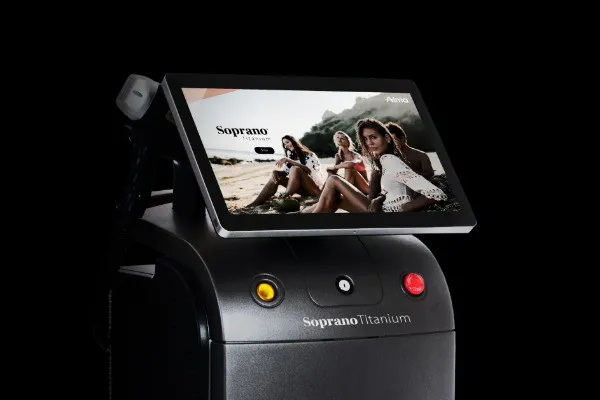
All-inclusive
Dr Tino Solomon discusses innovations which have made laser hair removal available to a more diverse clientele
Laser hair removal is one of the most popular non-injectable treatments. So what are the technological breakthroughs that mean (almost) nobody is excluded from having it any longer? To this day, patients’ biggest concerns when it comes to lasers, says cosmetic physician and surgeon Dr Tino Solomon, “are that they will burn the skin and that they’re just not safe on darker skin tones.”
It stems from the fact that for years, very specific lasers and highly skilled practitioners (not always guaranteed in the notoriously unregulated UK world of tweakments) were required for patients with dark skin or with very light hair. But today, safe, easy and painless permanent hair removal for (practically) all is a reality: 90% of candidates can successfully be treated thanks to some significant breakthroughs in laser technology.
To understand exactly how all the issues dogging hair removal lasers can now be bypassed, Solomon agreed to take us through the features of what he calls “the gold standard of hair removal lasers”: the Special Edition Soprano Titanium.
Triple-wavelength efficiency
It is now possible to simultaneously emit the three main laser frequencies that experts use to disable your hair follicles (755, 810 and 1064 nanometres) in a single laser pulse. Each frequency (or wavelength) reaches a different depth under the surface of the skin, ‘specialising’ in killing the root of the hair follicle, which is responsible for feeding the hair bulb and regenerating the hair. It means they tackle hair at different stages of growth, with different levels of pigment and different textures (such as light and fine or dark and coarse).
This type of simultaneous ‘3D’ technology is unique in the Soprano. Where single-frequency hair removal lasers have to be selected and calibrated carefully for the predominant hair type and growth phase, “this machine’s multi-level high-frequency pulses can blast hairs at any stage (not just in the anagen phase) and of almost every colour,” says Solomon. “It means the laser works much faster, with an average of six treatments needed where elsewhere it’s at least twelve.” This should, of course, save you money as well.
Apart from being far less painful, lower heat means that melanin in the skin won’t compete with melanin in the hair for energy absorption, so dark skin won’t get burned –which explains why the technology is safe for even the deepest skin tones and recently tanned skin. Lower heat (which is further guaranteed by gradual heating and continuous cooling) also means no inflammation – and that means the chances of post-inflammatory hyperpigmentation (PIH) are hugely reduced.
“We just don’t get hyperpigmentation with this machine,” says Solomon. AI in the future is set to make the process even more refined and personalised: it will perform skin analysis that takes into account lifestyle factors, environmental conditions, and genetic information, making hair removal lasers ever more foolproof.
Smart self-regulation safely blasts fine, light hair
The current machine already deploys “something very close to AI,” says Solomon. A self-regulatory gradual-heating mechanism automatically ‘reads’ the texture of every individual hair and calibrates the energy it delivers accordingly. “That further reduces the chances of over-powering any hair - even if it’s fine, light blonde or grey - and causing pain or damage.” Red and white hairs lack the pigment needed for lasers to work, so they are sadly still beyond their scope.
A ‘jumbo’ handpiece for speed and comfort
The large (4cm2) handpiece offers significant advantages that weren’t accessible before. Of course, it means treatment sessions take far less time, up to 20% faster than previous devices. A full-body treatment now takes as little as 20 minutes.
It also increases the comfort factor. “The distribution of the focused energy over a larger surface area reduces the chances of damage or pain,” says Solomon. On top of that, the icy-cool applicator lowers the skin’s temperature “to the point where even deep and powerful laser penetration won’t hurt the patient.”
*2020 RARE Consulting Group Consumer Tracker
_(600_x_300_px)_(1).png)